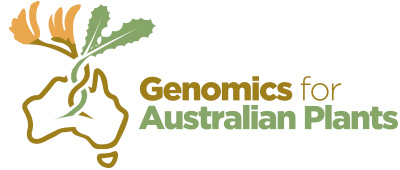July 2019 Updates
1) Reference genome (wet lab)
· Acacia – The Acacia group has submitted samples for short read sequencing, and data have been generated. Samples for long read sequencing have been submitted and undergoing QC.
· Telopea – The Telopea group is currently optimising extractions for 10X, short read and long read sequencing. The DNA extracts are suitable for short read and 10X but not long read.
· Areocleome – The Areocleome group is growing the plant material for sequencing.
2) Reference genome (bioinformatics)
· Short read Acacia pycnantha sequence has been generated and is now available on the data portal for Consortium members.
· The Bioinformatics (pilot genomes) working group are meeting once a month with the Australian Bioinformatics Commons (BioCommons) to discuss the tools and compute requirements for the GAP reference genome pilot projects and beyond.
3) Phylogenomics (wet lab)
· After many months of discussions, the long term goals of the project’s Phylogenomics aim is now available here: https://www.genomicsforaustralianplants.com/phylogenomics/
· The phylogenomics working group are currently planning a pilot study to compare the Angiosperms353 set, and a bespoke set developed by the Waycott lab (University of Adelaide and State Herbarium of South Australia).
4) Phylogenomics (bioinformatics)
· A working group dedicated to the bioinformatics requirements for phylogenomics will be set up shortly. Anna Syme will be leading the group.
5) Conservation genomics
· Background: The Conservation Genomics component aims to provide genomic information to support conservation of the Australian flora. Conservation genomics covers a range of activities according to the management questions being addressed. The types of studies that appear to most fit the objectives of Genomics for Australian Plants are resolution of species complexes consisting of suspected conservation dependent species, as these address the principles developed for Genomics for Australian Plants initiative i.e.: uses herbarium specimens; builds capacity in herbaria and botanic gardens; provides genomic resources that can be used in future studies; improves knowledge of Australian plant diversity; has a direct conservation benefit and can be implemented across Australia with a common approach.
· The Conservation Genomics working group will be set up shortly. Margaret Byrne will be leading the group. An EOI was distributed and 10 interested candidates responded. All the EOIs were accepted.
6) Bioinformatics Engagement Officer
Bioplatforms has appointed Johan Gustafsson as the Bioinformatics Engagement Officer. This position is funded by Bioplatforms and hosted at Melbourne Bioinformatics, University of Melbourne.
The Bioplatforms Bioinformatics Engagement Officer will work closely with bioinformaticians and other relevant staff involved in each Bioplatforms Framework initiative, to document the bioinformatics and data management methods, software, workflows and infrastructure used within each initiative, as well as any challenges faced. The role will develop an in-depth awareness of the tools and methods being utilised in each framework initiative and will identify and promote synergies between the various initiatives (e.g. opportunities for re-use of methods, approaches, tools or infrastructure), and also define structures/resources that can be adapted by bioinformaticians for use in new Framework Initiatives.
The role will also act as a bridge to the Australian BioCommons, which is building data and bioinformatics infrastructure for all Australian Life Scientists. This will ensure that the requirements from the Framework Initiatives inform the BioCommons architecture and processes, and that bioinformatics practitioners involved in the Framework Datasets can utilise any BioCommons infrastructure developed as first adopters.
These aims will be achieved through direct consultation and engagement with the bioinformatics community and computational resource providers. Examples of this engagement may include identifying and supporting Framework Initiative project working groups, coordinating workshops focused on project and domain specific challenges, and webinars or other online formats that communicate the breadth and depth of bioinformatics across and within individual Framework Initiatives.
